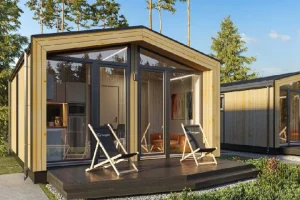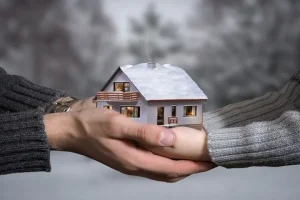The Cornice is a strip or side band that is placed on the edge of the roof and floor of a building and covering end of the walls. In fact, the cornice is an important element that helps to design and display the building.
As one of the architectural elements of the building, the cornice plays a very important role in the design and presentation of the building, according to the type of style and architecture of the building. In different architectural styles, cornices are designed and executed in different shapes and forms. For example, in the classical style of architecture, the cornices are designed in a complex and detailed manner and are used as one of the main elements in the decoration of the building, but in the modern architectural style, the cornices are designed in a simpler way and more They are used to protect and control sunlight and rain.
The cornice has three main parts
- The head part where the ceiling or floor of the walls are connected.
- The main part that starts from the edge line of the ceiling and floor and extends vertically.
- The lower part that acts as the base of the cornice and forms the base of the ceiling or floor.
Applications of cornice
The use of cornice in buildings, for many reasons, including beauty, protecting the walls and the building from the weather, preventing sunlight from entering the building, and protecting the roof or the lower end of the wall from erosion capacity and… as one It is one of the key elements in the design of buildings.
In other applications, cornices are used in the interior design of buildings and even in furniture. For example, in interior design, cornices are used as a decorative element for walls and cabinets. In furniture, cornices are usually used as part of the design of chairs, sofas and beds.
In general, cornice is very important as a beautifying element in building and interior design, and it can be used in a way that makes the building more elegant, resistant and practical.

Also, cornices are used in historical buildings as one of the important elements in protecting and maintaining the building from rain and water. In some cases, cornices are decorated and designed using special materials such as stone, ceramic, concrete, etc., and in some cases they are made of clay.
Types of cornices
Cornices are usually made of different materials, depending on the style and architecture of the building, protection and aesthetic needs, the type of material is determined. Of course, each type of cornice has its own characteristics. The materials used to make the cornice are:
Wooden cornice
Wooden cornices are very common in historical and traditional buildings. Wood is used in the design and construction of cornices for reasons such as lightness, beauty and flexibility.
Stone cornice
Cornices made of stone are very common in historical and traditional buildings. Stone is used in the design of cornices due to its high resistance to weather and its beauty and elegance.
Ceramic cornice
Cornices made of ceramics are very common in modern buildings and are used in the design of cornices due to their high resistance to weather, lightness and beauty.
Concrete-metal cornice
Baseboards made of concrete and metal are very common in modern buildings and are used in the design of baseboards due to their high resistance to weather and the beautiful appearance.
Considering the different materials used to make cornices, cornices can be used as an important element in the design and construction of buildings in a way that can meet the needs of each building and its architectural style.





One Response
nobis minima sunt perferendis est quia ipsum. vel accusantium at et consequatur recusandae dignissimos a quae reiciendis quod sunt et aliquam minima sequi fugit dolorum minus sed. expedita et tempore qui aperiam rerum aliquam laudantium autem similique sequi aliquid minus fugit voluptate. molestiae ad pariatur modi et quibusdam possimus incidunt est cumque.